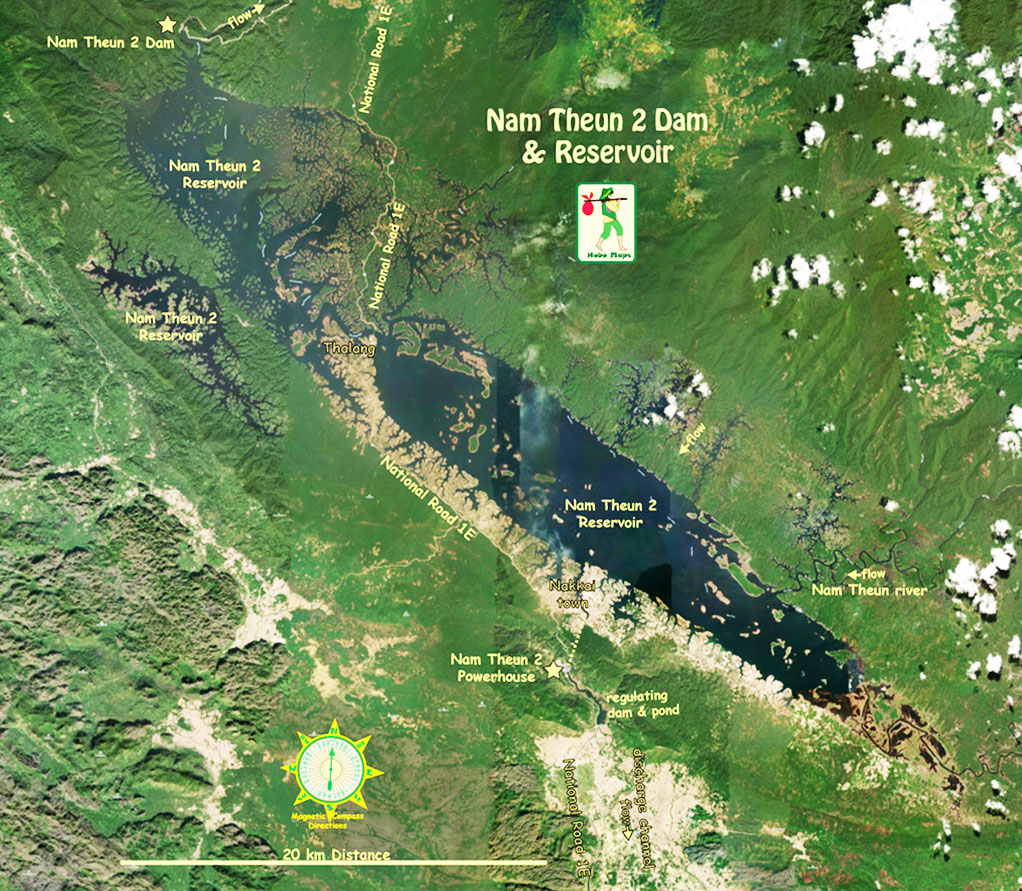
Nam Theun 2 Dam Hydropower Info by Hobo Maps - Go to Hydropower Projects Page - - Home
The Nam Theun 2 (NT2) hydroelectric project is located on the Nam Theun (river) in the central provinces of Khammuane and Bolikhamxay, Lao PDR. Water from the Nam Theun (river) is dammed to form a large reservoir on the Nakai plateau. A small steady flow is continuously released into the Nam Theun River downstream of the dam.
Nam Theun 2 is pronounced like "Nam Tune Song".
Nam Theun 2 hydropower project satellite image below:

NT2 is a trans-basin diversion project and water from the reservoir enters an intake structure near Nakai town and is piped down to the powerhouse at the base of the Nakai Escarpment and then discharged into the Xe Bang Fai drainage basin.
Nam Theun 2 (NT2) dam site satellite image below at coordinates - 17°59'52.8"N 104°57'21.6"E (17.998, 104.956)
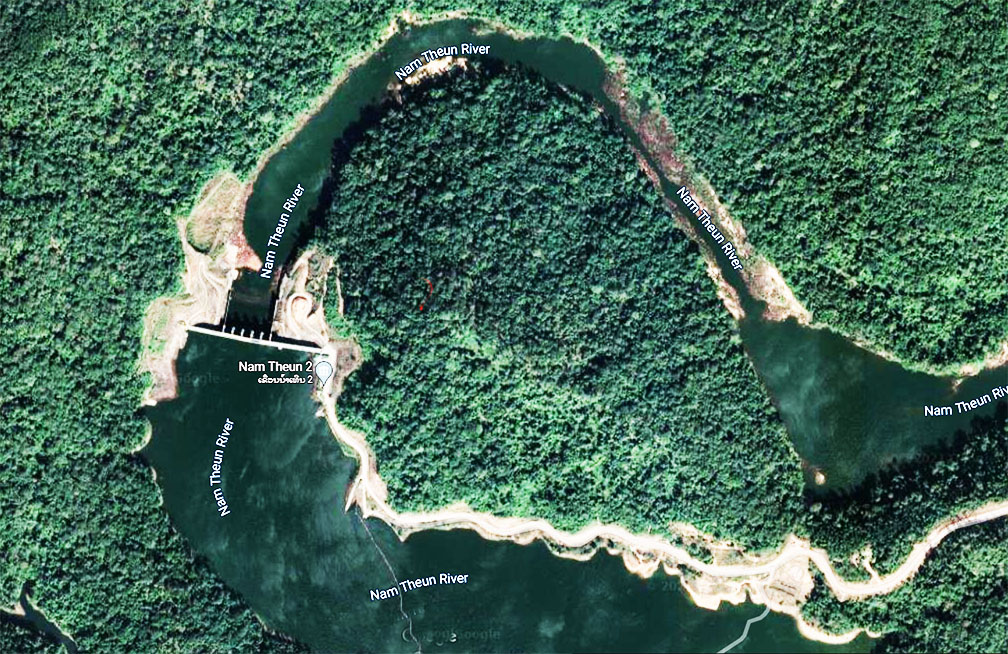
Nam Theun 2 (NT2) dam site structure images below. This dam structure site is about 35 km distance from the NT2 powerhouse near the other end of the reservoir to take advantage of a steep drop in elevation down to the powerhouse.

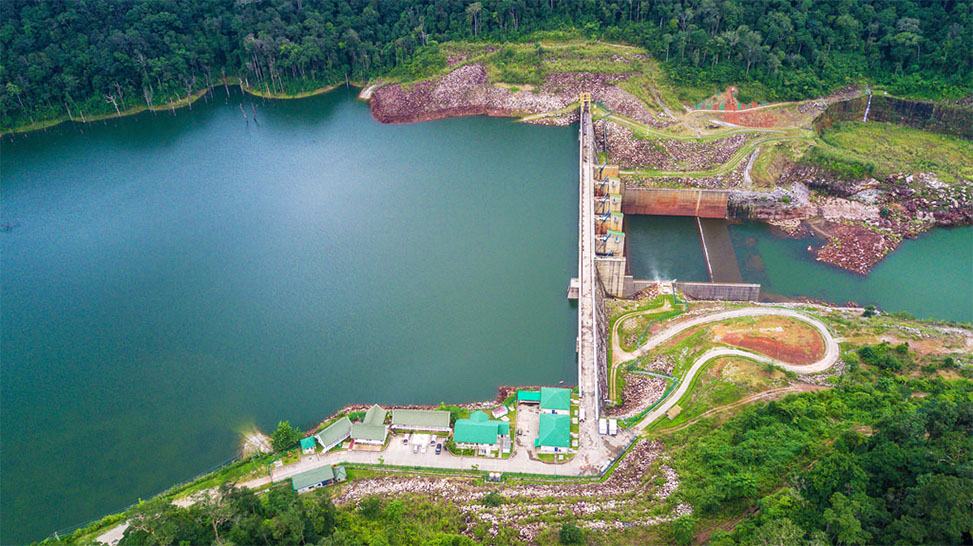
The Nakai reservoir covers more than 450 square km at full supply level and just 86 square km at minimum operating level. The reservoir innundates 195 km length of its tributary rivers at full supply level when the surface elevation is at 538 meters above sea level. The Nam Theun watershed covers about 4,039 square km.
The reservoir is called Nakai Reservoir or Nam Theun 2 Reservoir or NT2 Reservoir. Its volume capacity is the second largest in Laos after Nam Ngum 1 Reservoir. Total storage capacity is 3.9 billion cubic meters with an active volume of 3.6 billion cubic meters, leaving only .3 billion as dead volume. NT2 reservoir is about 80 km long and mostly shallow with an average depth of 8 meters and 39 meters maximum depth.
13 saddle dams allow the reservoir water storage capacity to be increased.
Water from the reservoir drops 350 meters down to a powerhouse at the base of the Nakai escarpment near the town of Gnommalat. The water discharged from the powerhouse then flows along a 27 km open channel to the Xe Bang Fai (river) which drains into the Mekong. A regulating dam and pond downstream of the powerhouse allow the smooth release of water into downstream water courses.
Nam Theun 2 layout image below:
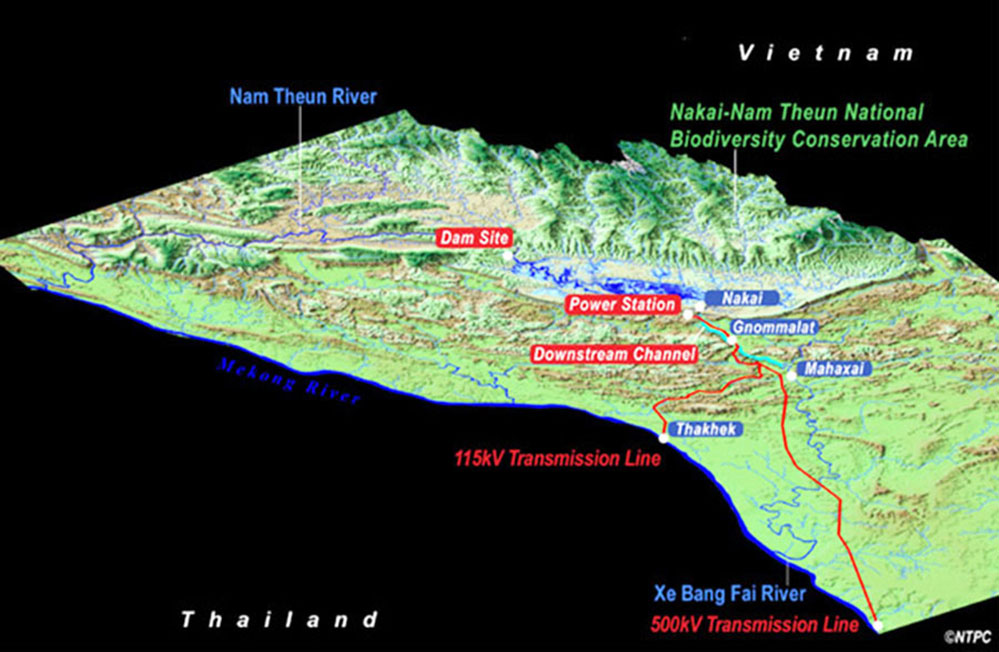
The Project was developed by Nam Theun 2 Power Company Limited (NTPC) as a public-private partnership. NTPC was originaly owned by Electricite de France International (EdFI) of France (35%), Electricity Generating Public Company (EGCO) of Thailand (25%), Italian Thai Development Public Company Limited (ITD) of Thailand (15%), and the Government of Lao PDR (25%) - Lao Holding State Enterprise (LHSE).
Later reports have ownership as EDF Nam Theun Holding (40%), EGCO (35%) & LHSE (25%)
The project was developed as a build-own-operate-transfer project with the Lao government granting a 25-year concession to operate the power station after which full ownership of NT2 assets will transfer to the government at no cost. The project started commercial operations in March 2010.
Estimated project cost was US $1.45 billion. The Project was originally financed using a combination of loans and contingency financing of about US $1.1 billion and shareholders equity of about $350 million. Asian Development Bank (ADB) was active in helping to arrange the financing and provided a startup loan to the Lao government. Project costs include the $1.25 billion base cost plus $200 million in contingency funding. International financing involved International Financing Institutions (such as ADB), Export Credit Agencies and multiple commercial lenders.
The project is rated at 1,070 MW and annual production capacity is about 5,500 gigawatt-hours (GWh). The plan is to export annually about 5,300 GWh to Thailand and about 200-300 GWh to EDL for consumption in Laos. It is estimated the project will generate about US $1.9 billion revenue for the Lao Government over the 25-year operating period.
Main features of NT2 project below:

The Nakai Dam structure is 439 meters long and 39 meters high and includes five radial gates to release floodwaters. The reservoir has 13 saddle dams on the south and west sides to close the reservoir and create greater water storage.
Water from the intake structure flows into a headrace tunnel (1500 meters long and 9.2 meters diameter), then to a vertical pressure shaft (vertical drop of 220 meters, diameter 8.8 meters) down through the rock escarpment dropping about 350 meters in elevation from the reservoir and finally through a horizontal pressure tunnel 1142 meters long to reach the power station.
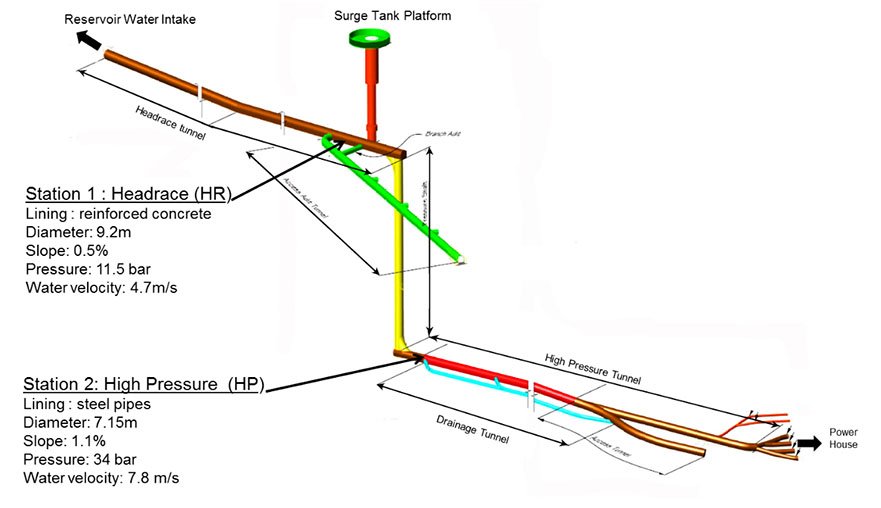
The Headrace section is made of reinforced concrete and is 9.2 meters in diameter with a slope of 0.5%. Typical water pressure is at 11.5 bars and the velocity is 4.7 meters per second
The high-pressure Penstock is 7.15 meters in diameter with a slope of 1.1%. Typical pressure is at 34 bars with water velocity at 7.8 meters per second.
The Power House (images below) has four Francis turbines (total 996.5 MW) and two Pelton turbines (total 75 MW).
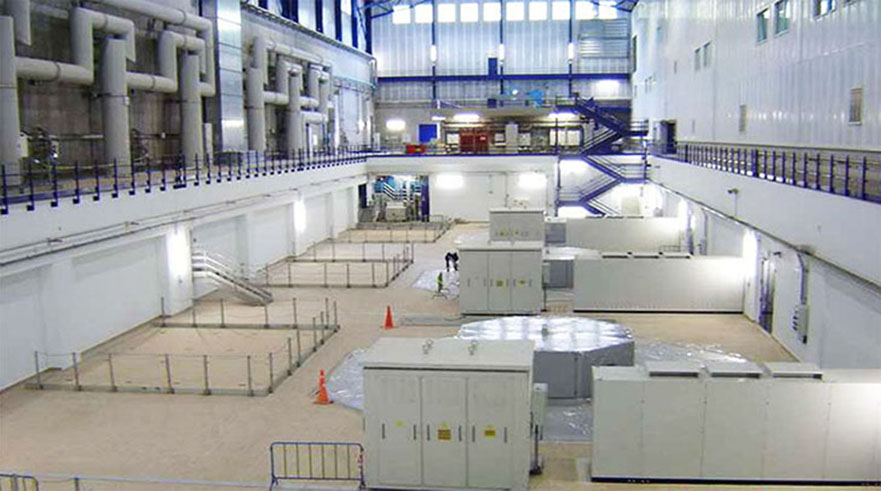
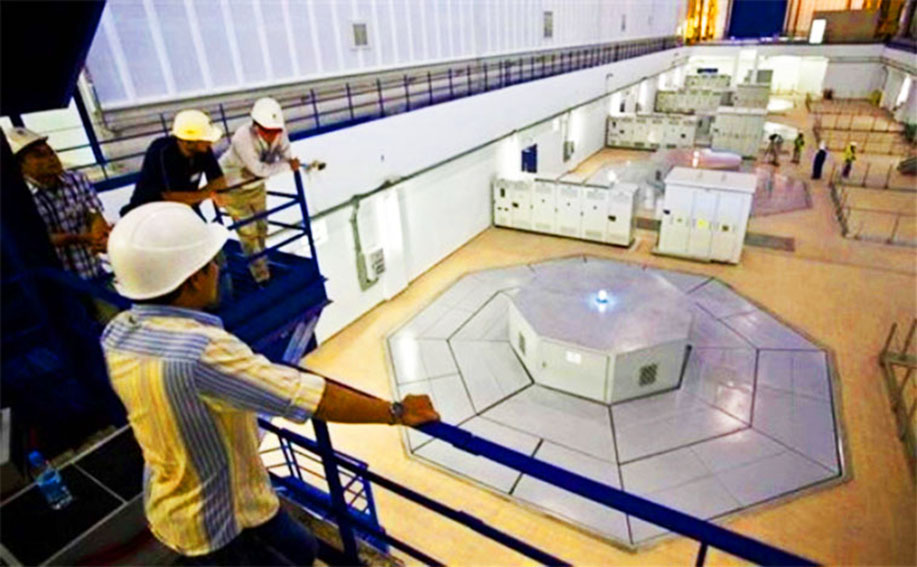
Nam Theun 2 vertical Francis reaction turbine image below. After entering a spiral-shaped casing, water is guided to the turbine wheel, known as a runner, causing it to spin. Guide vanes can be adjusted to allow efficient operation over a range of water flow conditions.
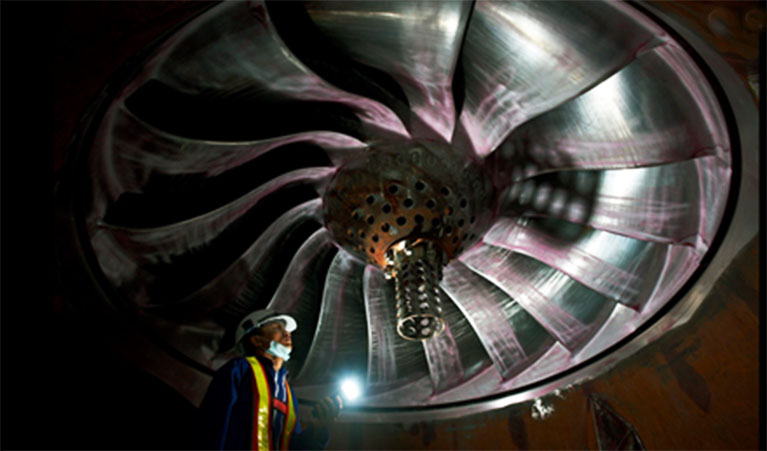
The water passing through the power house exits into a 340 meter long tailrace channel into a regulating pond. Released water from the regulating dam then flows into a 27- kilometer-long downstream channel that flows into the Xe Bang Fai River which eventually joins the Mekong River.
A 115 kV double circuit transmission line goes to Mahaxai in Lao PDR. and a 500 kV double-circuit transmission line goes to the Thai border for export.
The project required the relocation of about 17 villages and 6,200 people, predominantly ethnic minorities.
NT2 Location and Details below:
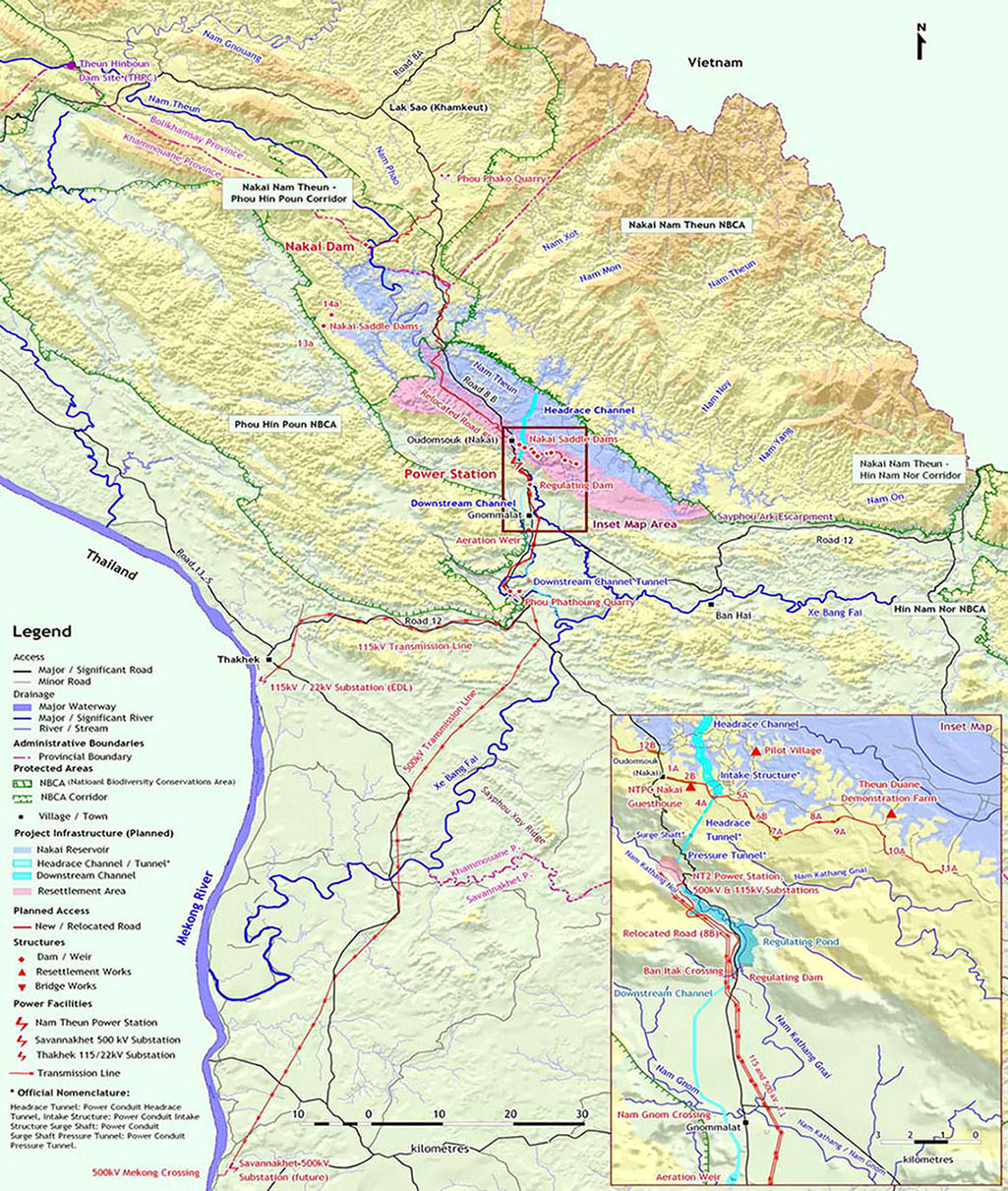
Nam Theun 2 plant area and regulating pond image below at coordinates - 17°40'45.9"N 105°09'12.7"E (17.679403, 105.153526). Bottom left corner shows the top of the surge tank shaft (109 meters high and 8.8 meters in diameter).
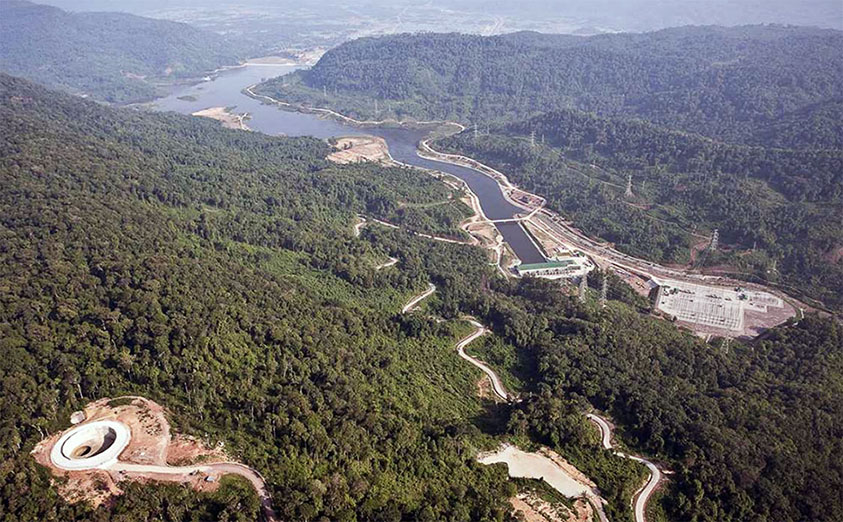
Nam Theun 2 regulating dam image below:
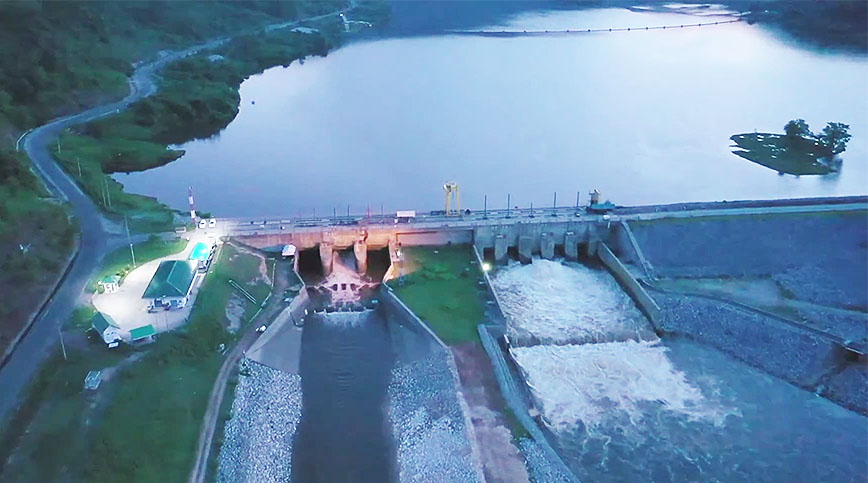

Nam Theun 2 upriver view image below looking north:
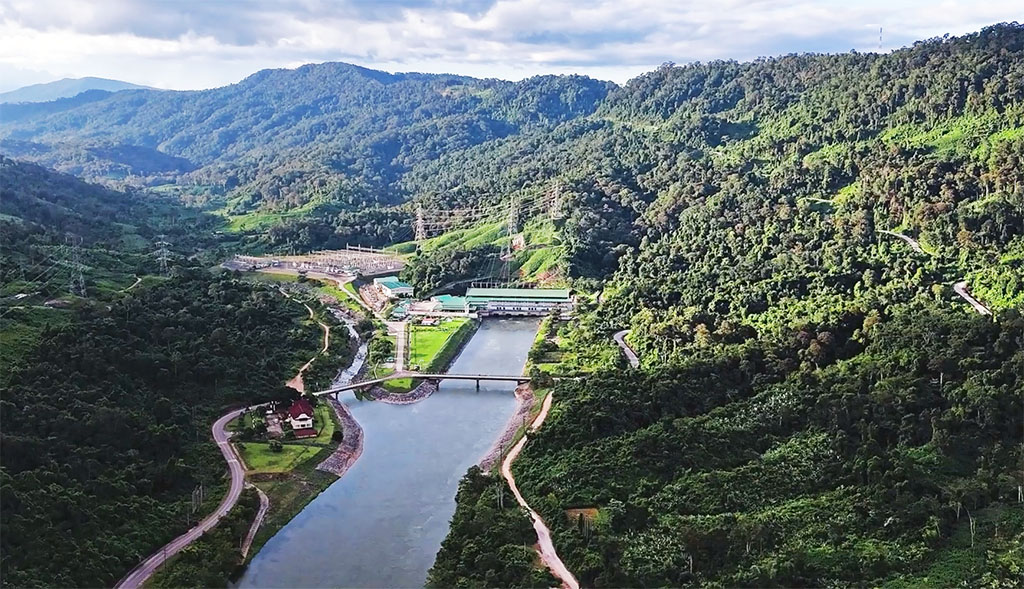
Nam Theun 2 downstream channel images below looking south:
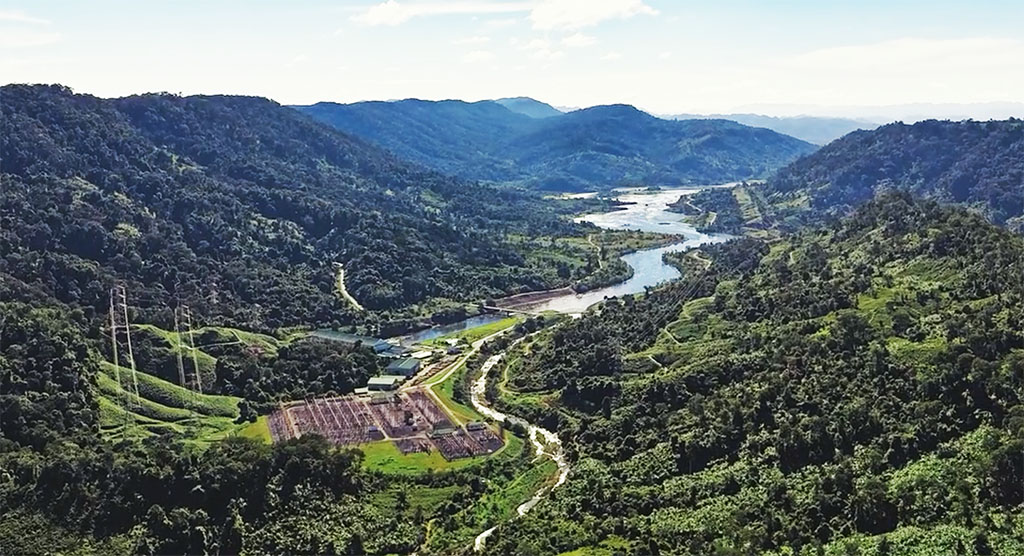
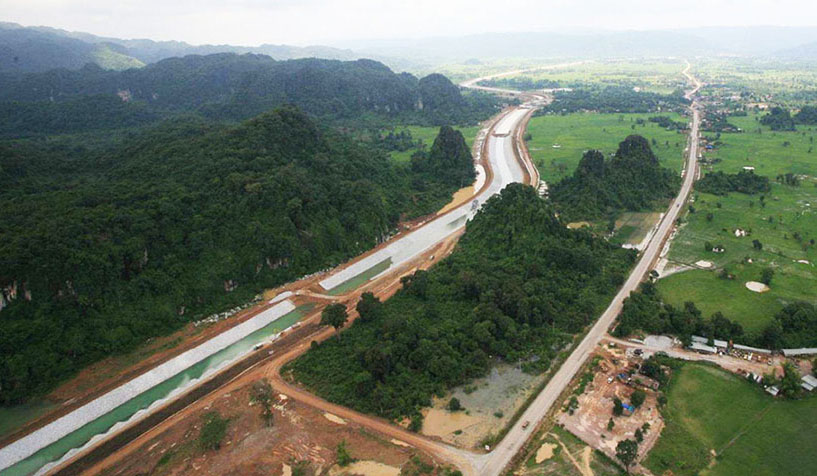
Nam Theun 2 intake structure near Nakai town below:

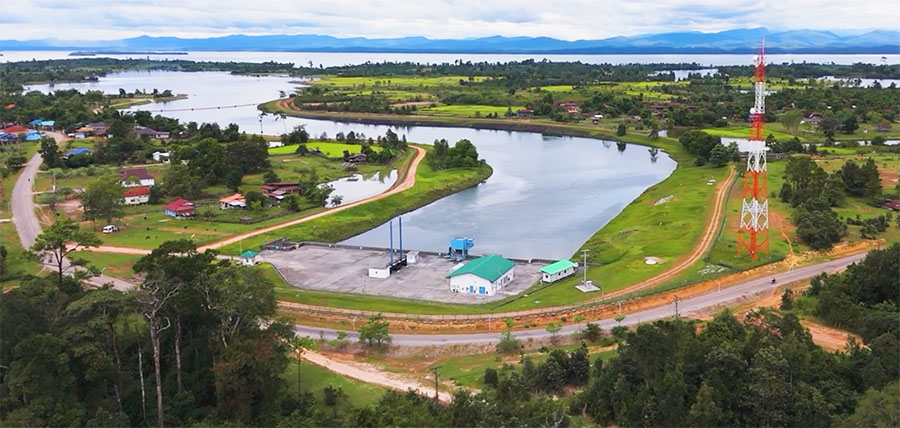
Nam Theun 2 controls images below:
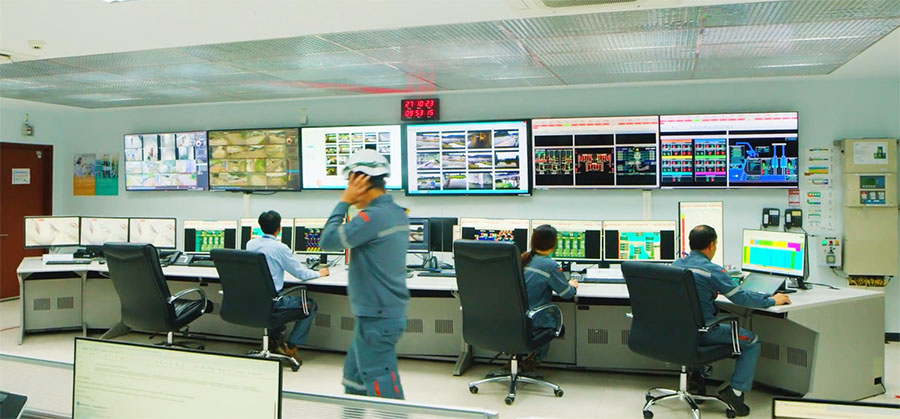
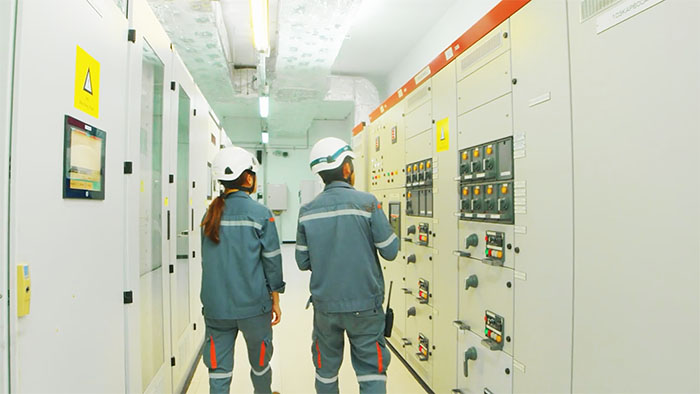
Nam Theun 2 generator repair images below:
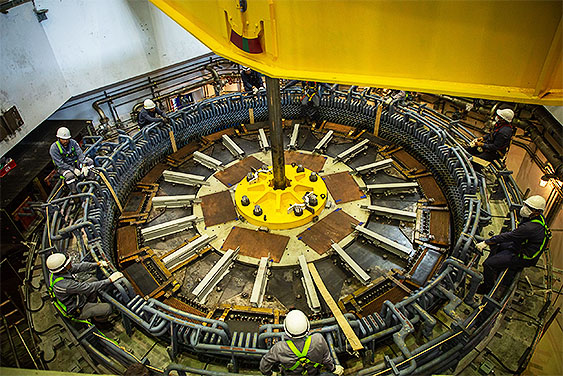

Nam Theun 2 project shown in yellow oval area on right side of map below. The intake structure near Nakai town is about 40 km southeast of the dam structure.
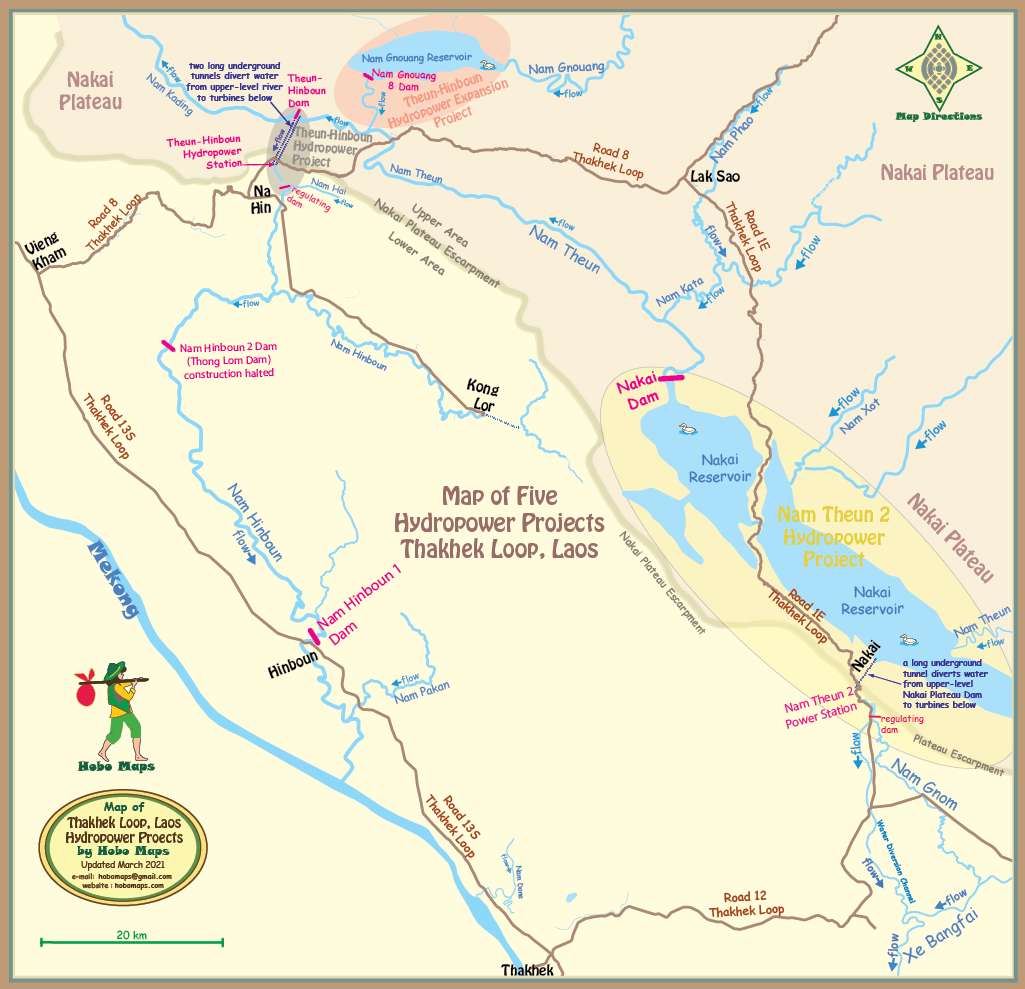
NT2 reservoir expands and contracts with the wet and dry seasons as illustrated below:

Good info at NT2 Visitor Center in red-roof building below - not far below and south of Nakai town on National Road 1E

Nam Theun 2 drawing 3D perspective view below looking south:
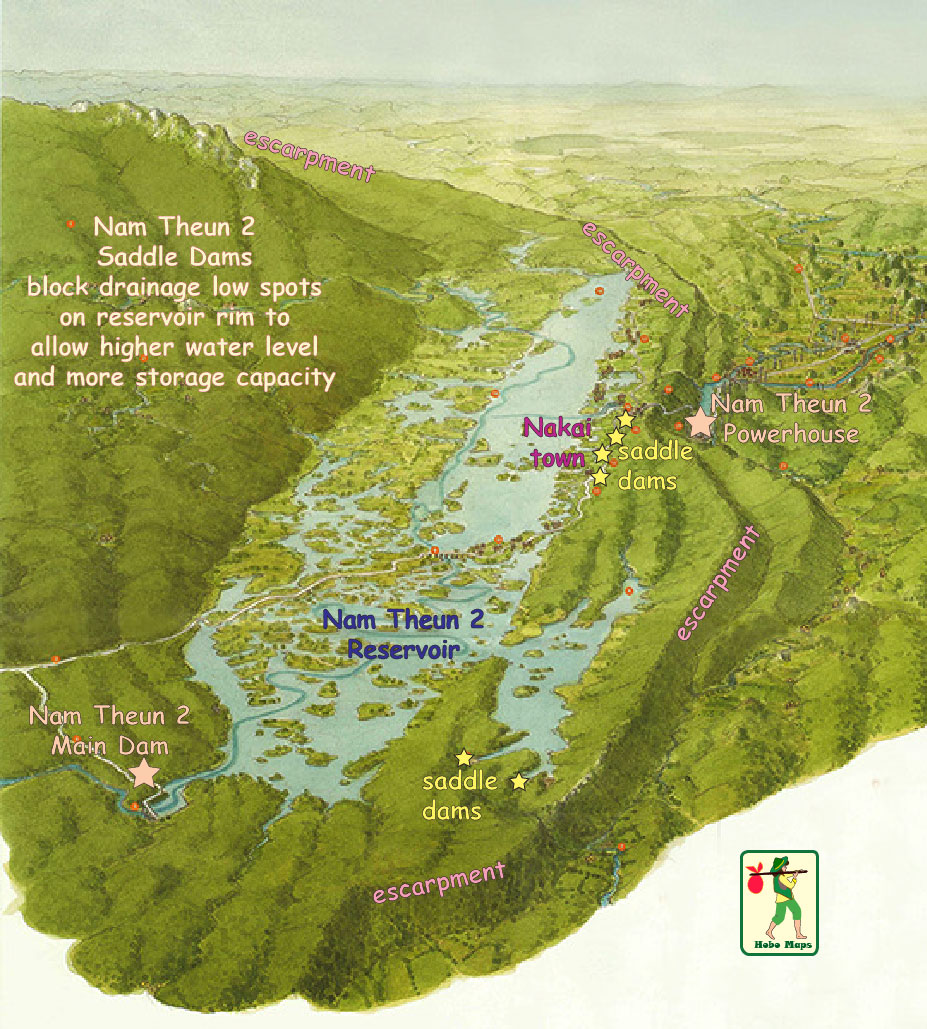
NamTheun 2 aerial view video 9/12/2017 - HERE .
Inter Basin Water Diversions:
The Nam Theun (river) historically had all of its water flow into the Nam Kading (river) which joins the Mekong near Pak Kading. The Nam Theun 2 Hydropower project diverted much of the Nam Theun flow into the Xe Bang Fai (river) which joins the Mekong south of Thakhek town. This diversion has decreased the natural Mekong flow along about 190 km of its length between the Nam Kading and Xe Bang Fai confluences.
The Theun-Hinboun Hydropower projects have also diverted waters from the Nam Theun (river) and from the Nam Gnouang (river) into the Nam Hinboun (river) which joins the Mekong near Hinboun town. This diversion has decreased the Mekong flow even more along the 93 km distance between the Nam Kading and Nam Hinboun confluences.
The natural flow of the Mekong past the Thakhek Loop area is now greatly reduced by the amount of these two inter-basin diversions. See our Thakhek Area Drainage Map for more detailed info regarding these diversions.
A 138 kilometer double circuit 500 kV transmission line was constructed as part of the Transmission System for the Project to deliver the electricity generated at the Power Station for supply to EGAT at the EGAT Delivery Point on the border along the route seen in map below: See enlarged version HERE
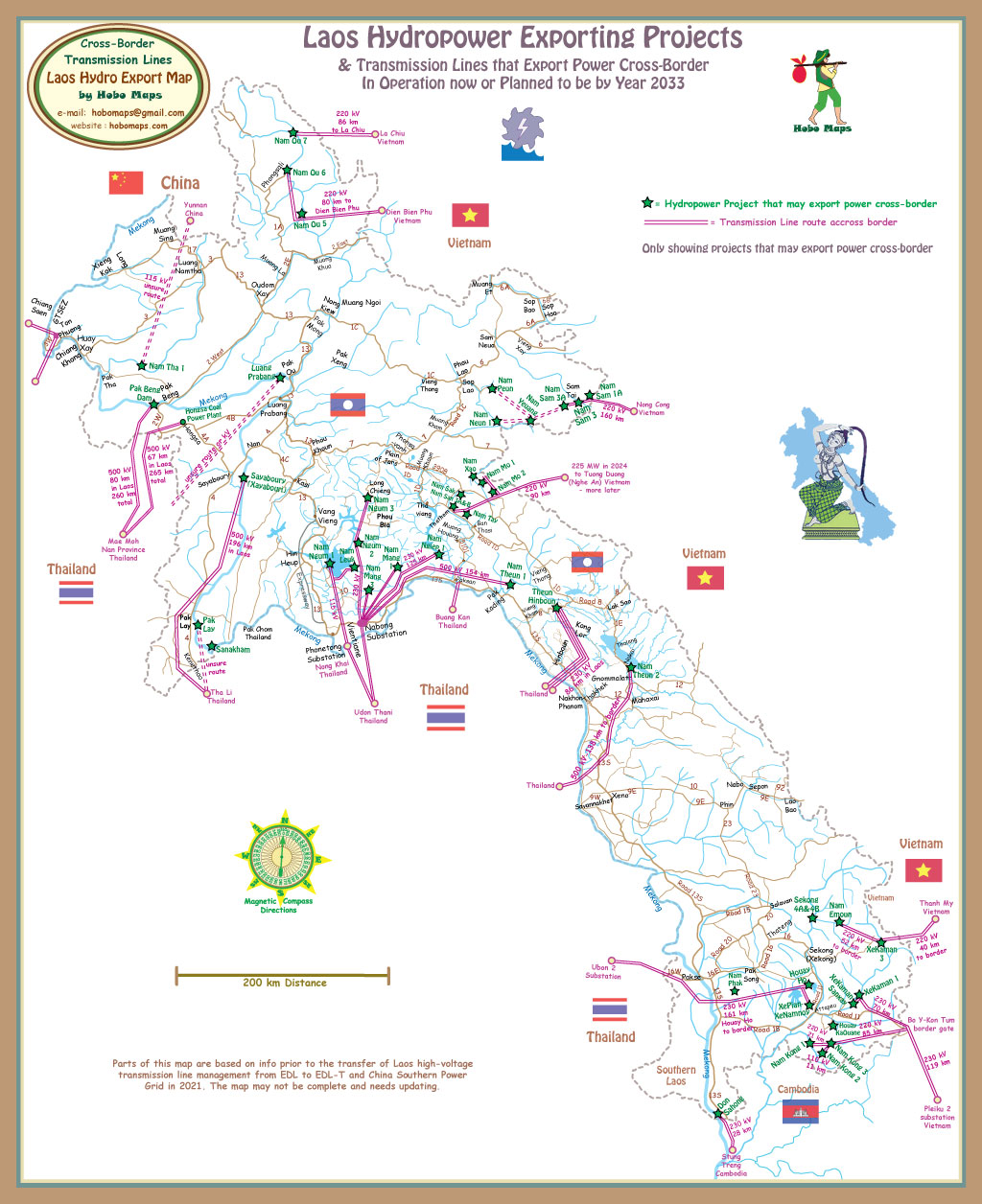
Nam Theun 2-Solar Project
The Lao government and shareholders in the Nam Theun 2 hydropower project have agreed to develop Nam Theun 2-Solar on the reservoir of Nam Theun 2. It would be one of the largest hybrid floating solar projects in the world with solar panels covering an area of 3.2 square kilometres (less than 1 percent of the reservoir’s surface area at full supply level).
Nam Theun 2 powerhouse discharge water flows into a 16 km long concrete channel that brings irrigation benefits to adjacent lands. Images of this channel below courtesy of NT2 Facebook page - https://www.facebook.com/namtheun2/photos/pcb.5326913074077115/5326912884077134

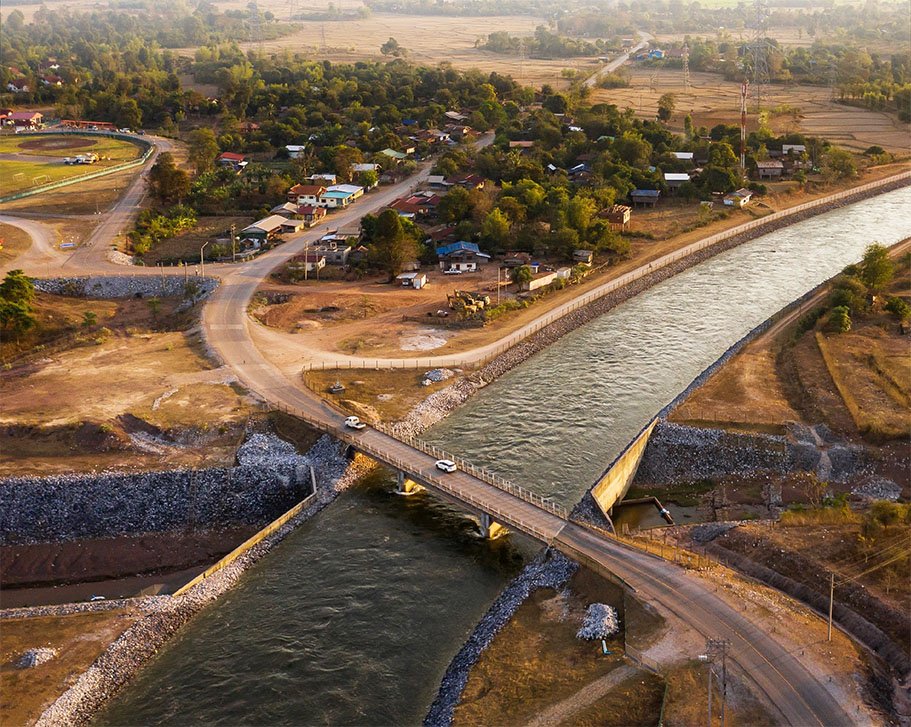
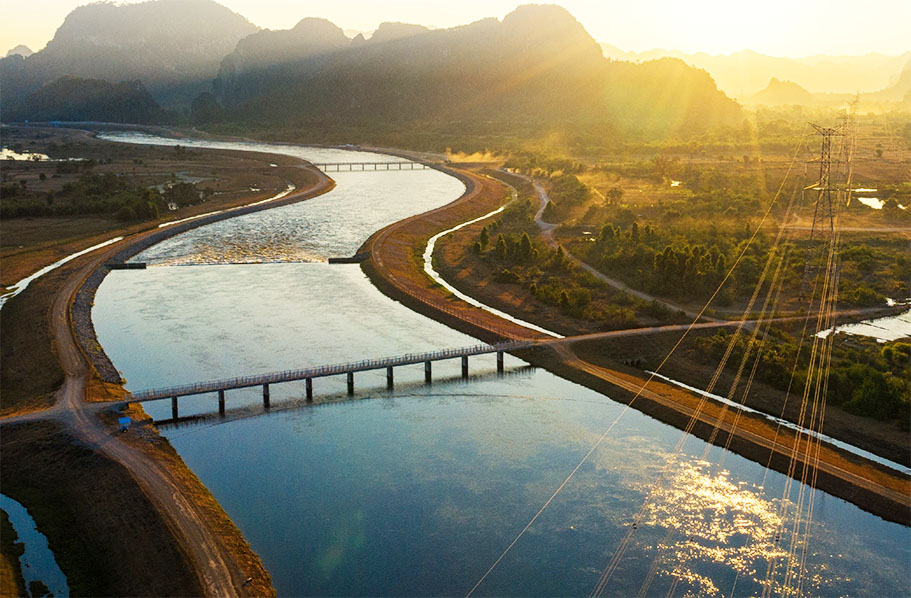

An aeration weir system below.
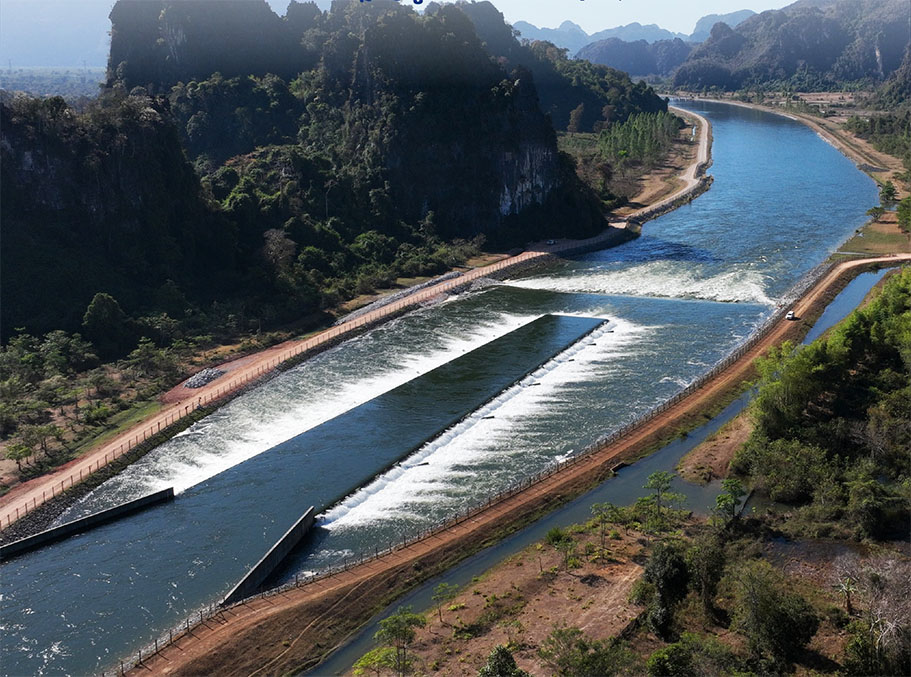
A 600 meter-long tunnel takes the downstream channel through a karst mountain below.
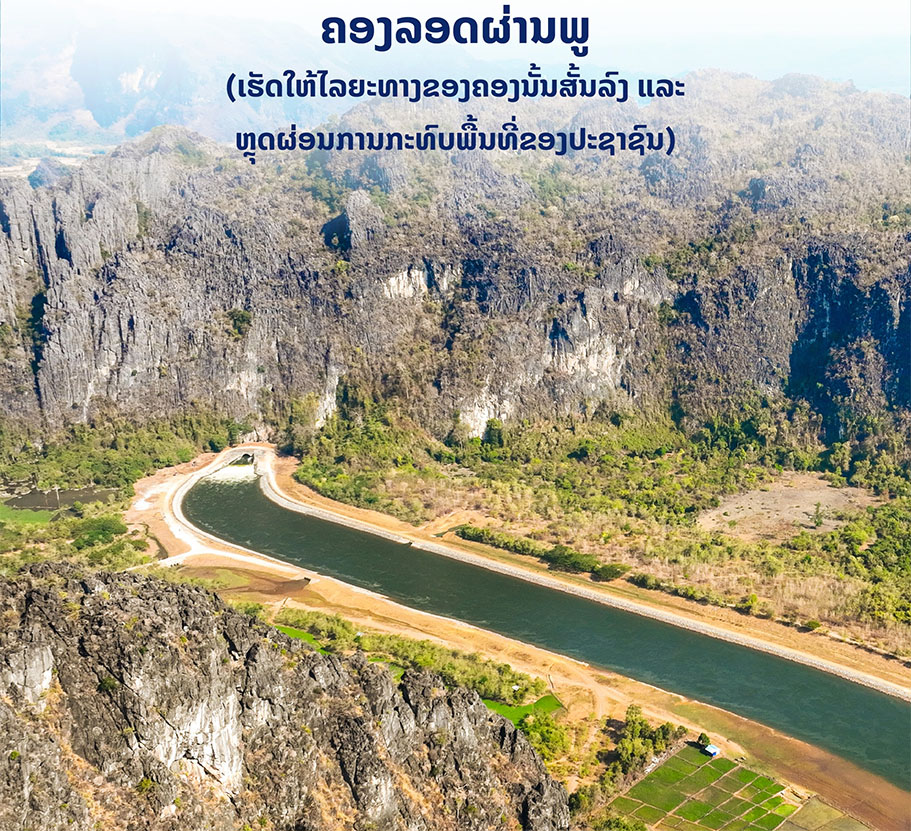

Nam Theun 2 History
1993 - Agreement is signed between the government of Lao PDR and
private sponsors to develop the project with
World Bank guidelines.
1997 - First series of environmental and social safeguards documents produced.
1997-1998 - Asian financial crisis forces the governments of Lao PDR and Thailand to delay development of the project.
May 2000 - EGAT and Nam Theun 2 Electricity Company (NTEC) agree on a proposed electricity tariff.
September 2001 - Shareholders agreement signed.
September 2002 - NTEC and government of Loa PDR create Nam Theun 2 Power Company (NTPC) as a Lao company.
October 2002 - Concession agreement signed.
November 2003 - Power purchase agreements signed with EGAT and EDL.
2004 - Completion of safeguard documents and project financing.
June 2005 - Financial close, beginning of full construction activities and implementation of social and environmental programs.
April 2006-April 2008 - Construction of resettlement villages and relocation of villagers to new homes.
August and October 2007 - First partial and temporary impoundment of the reservoir (80 sq km).
March 2008 - Completion of diversion tunnel concrete works.
April 2008 - Closure of diversion tunnel and beginning of impoundment.
June 2008 - Tunnel filling test.
August 2008 - Spillway gates closed on Nakai dam.
March 2010 - Commercial export of electricity to Thailand begins.